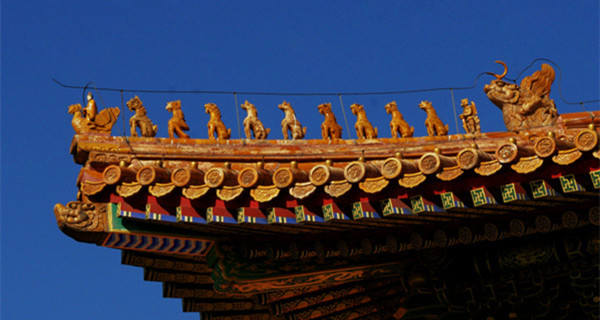According to Chinese tradition, the legendary beasts on traditional Chinese buildings are 10 at most, which often stand on the vertical ridges of the two ends of a roof. Their sequence from the lower part to the upper part is like this: dragon, phoenix, lion, Pegasus, seahorse, Suanni (狻猊: Suān ní, considered the 5th or 8th son of the dragon), xiayu (狎鱼: xiá yú: considered one legendary fish), haetae (獬豸: xiè zhì), fighting bull and hangshi (行什), which represent different meanings when they are set on a building.

1. Dragon: It is a legendary creature which can produce rain and wind, and symbolizes the imperial power.
2. Phoenix: This is the queen of all birds according to legend. It is an auspicious sign. If someone is compared to it, it means this person has high moral standards and is smart.
3. Lion: This creature is the representative of bravery and solemnity, for it can threaten other creatures.
4. Pegasus: It is the avatar of auspiciousness, symbolizing the awesomeness and virtue of the imperial family can transcend the heavens and the seas and reach everywhere.
5. Seahorse: It is also the avatar of auspiciousness, symbolizing the awesomeness and virtue of the imperial family can transcend the heavens and the seas and reach everywhere.
6. Suanni: Legend says this creature can eat tigers and leopards.
7. Xiayu: It is an odd beast living in the sea. It is said this creature can fly to the clouds to produce rain and serves as a firefighter.
8. Haetae: It is said this is a kind of unicorn which can tell the right from the wrong. It is an image which represents conscientiousness and justice.
9. Fighting Bull: This beast is also named Tadpole Bull, which is a kind of dragon that can drive off evil spirits and disasters.
10. Hangshi: This beast really looks strange. It has a monkey’s face and a human’s body, and is the last in the rank.
Source: Translated from mt.sohu.com



